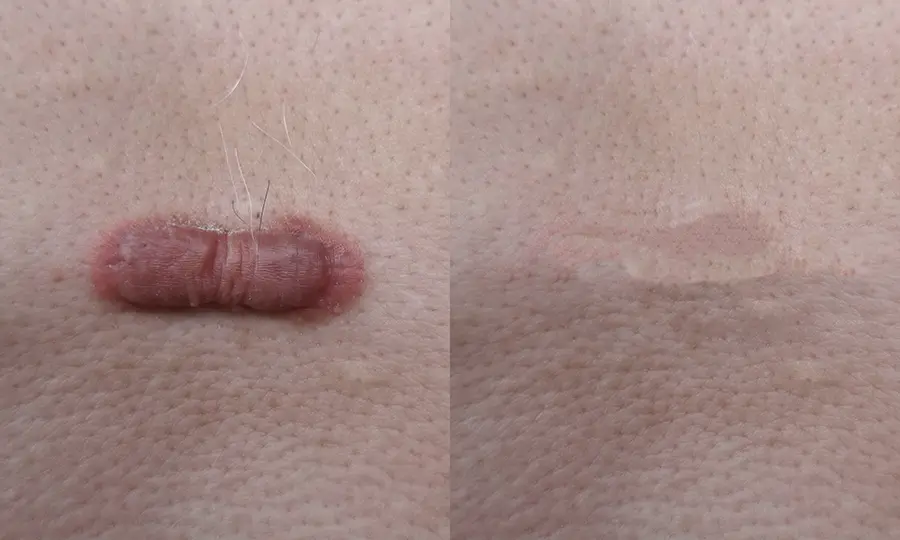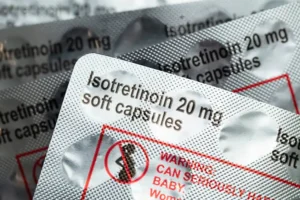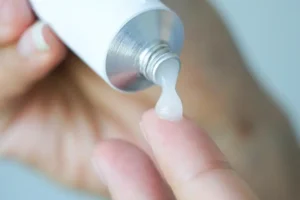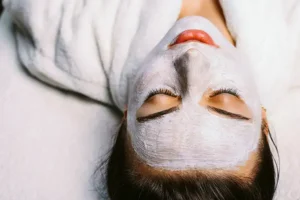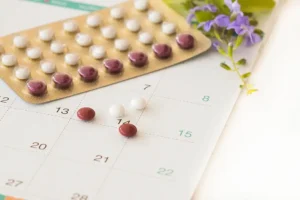Most acne scars fade or flatten over time, but sometimes your skin doesn’t stop healing when it should. Instead, it keeps producing collagen long after the wound closes. The result is a raised, thick scar that can itch, feel firm, and extend beyond the original pimple area. This type of scar is called a keloid.
Keloid acne scars are more than a cosmetic issue. They can be sensitive, uncomfortable, and emotionally distressing. The good news is that dermatologists have multiple treatment options that can reduce their appearance and even prevent new ones from forming.
What Are Keloid Scars?
Keloid scars form when the skin’s healing response goes into overdrive. Instead of stopping once the wound has closed, fibroblasts (the cells responsible for collagen production) continue building tissue. The excess collagen creates a firm, shiny scar that rises above the skin and may spread wider than the original acne lesion.
Unlike hypertrophic scars, which are raised but stay within the boundary of the wound, keloids can expand far beyond it. They can appear pink, red, or darker than the surrounding skin.
Why Keloids Form After Acne
Inflammatory acne, especially cystic or nodular breakouts, can damage the deeper layers of the skin. When the body repairs that damage, it sometimes produces too much collagen, leading to a raised scar.
Several factors increase the risk of keloids:
-
Genetics: If your parents or siblings develop keloids, you’re more likely to get them too.
-
Skin tone: Keloids occur more often in people with medium to dark skin tones.
-
Location: Areas like the chest, jawline, shoulders, and back are prone to keloid formation.
-
Inflammation: Deep or long-lasting acne inflammation triggers excessive wound repair activity.
Keloids may appear weeks or even months after acne has healed, since the body can continue remodeling collagen for a long time after the initial breakout.
Can You Get Keloids Without Acne?
Yes. Keloids can form after any skin injury, including cuts, burns, piercings, or surgery. The process is the same — overproduction of collagen during healing.
Keloids that form after acne tend to have more inflammation around them, which means treatment might combine scar-targeting procedures with anti-inflammatory care.
How to Treat Keloid Acne Scars
Professional Treatments
Corticosteroid Injections
Dermatologists often start with steroid injections directly into the scar. These flatten and soften the tissue by reducing collagen synthesis. Treatments are usually spaced a few weeks apart.
Cryotherapy
Freezing the scar with liquid nitrogen can reduce its size and texture. This works best on smaller or newer keloids.
Laser Therapy
Pulsed dye and fractional lasers can lighten redness, smooth the surface, and improve texture. They’re often used along with steroid injections for better results.
Surgical Removal
In severe cases, dermatologists can remove a keloid surgically. However, surgery alone often leads to regrowth, so it’s usually followed by steroid or radiation therapy to prevent recurrence.
Silicone Sheeting and Pressure Dressings
Wearing silicone patches or applying medical-grade silicone gel helps flatten scars and relieve itching. These are also effective preventive measures after acne or minor procedures.
Emerging Treatments
Some specialists use injections of 5-fluorouracil (5-FU), botulinum toxin, or verapamil to slow down collagen production and improve scar texture. These are typically combined with steroids for optimal results.
At-Home and Topical Care
Silicone Gels or Patches
Consistent use of silicone gel can gradually reduce raised scars and prevent new ones from thickening.
Topical Retinoids
Prescription or over-the-counter retinoids help regulate collagen production and support healthy cell turnover.
Sunscreen
UV exposure can darken keloids, making them more visible. Daily use of SPF 30 or higher helps maintain an even skin tone and prevent further thickening.
Avoid Irritation
Friction from clothing or touching the area repeatedly can worsen inflammation and increase the risk of regrowth after treatment.
Do Treatments Differ If Keloids Aren’t Caused by Acne?
Yes.
Keloids caused by acne often require combined therapies — for example, steroid injections to calm inflammation, followed by laser or silicone treatment to smooth the skin.
Keloids from trauma or surgical incisions, on the other hand, might respond better to silicone sheeting and pressure therapy alone, since there’s no underlying acne-related inflammation.
Regardless of cause, keloids need personalized care. Dermatologists may recommend maintenance treatments over several months to reduce recurrence.
Can You Prevent Keloid Acne Scars?
While you can’t completely control whether your skin forms keloids, you can reduce your risk:
Treat acne early and effectively to minimize deep inflammation.
Avoid popping or picking cystic pimples since trauma increases scar formation.
Use silicone gel or scar cream on areas prone to keloids once the acne lesion has healed.
Always apply sunscreen to scars and healing spots to prevent discoloration and further irritation.
See a dermatologist early if you notice thick or raised scars developing — the sooner you intervene, the easier they are to treat.
Expert FAQ About Keloid Acne Scars
Can keloid acne scars feel painful or itchy?
Yes. Many people experience mild pain, tightness, or itching because keloids can compress nearby nerves or remain slightly inflamed. Steroid injections and silicone gel can help relieve these symptoms.
Do keloid scars grow forever?
They usually enlarge for several months before stabilizing, but untreated keloids can keep growing slowly. Early medical treatment can stop them from expanding further.
Are keloids contagious or related to bacteria?
No. Keloids are not infections. They form due to the body’s overactive healing response, not from bacteria or viruses.
Can you treat keloids at home without a dermatologist?
You can manage small keloids with silicone gel and retinoids, but larger or painful scars require professional care. Self-treatment is unlikely to remove them completely.
Do lifestyle factors like diet or stress affect keloid formation?
There is no direct link, but chronic inflammation can worsen healing. Eating a balanced diet rich in vitamin C, zinc, and protein supports collagen balance and skin repair.
Can microneedling help with keloid acne scars?
Microneedling is not usually recommended for keloids because it can trigger new scar formation. It is safer for atrophic or depressed scars.

